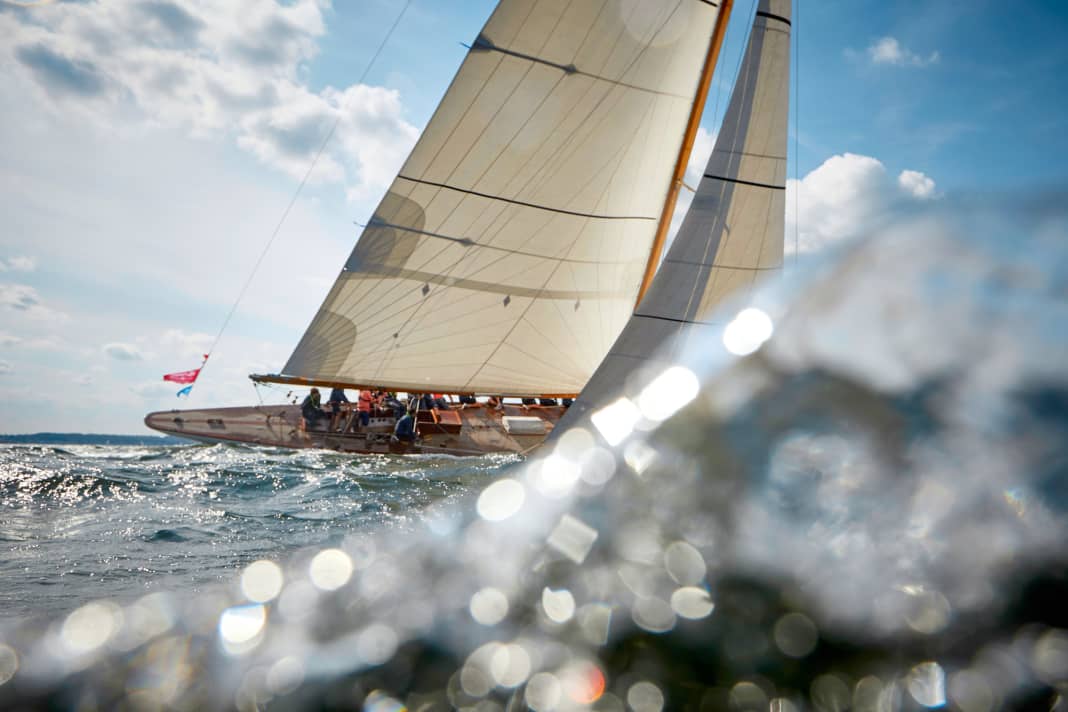





1st German Classics, Laboe: Family reunion of classic cars on the fjord
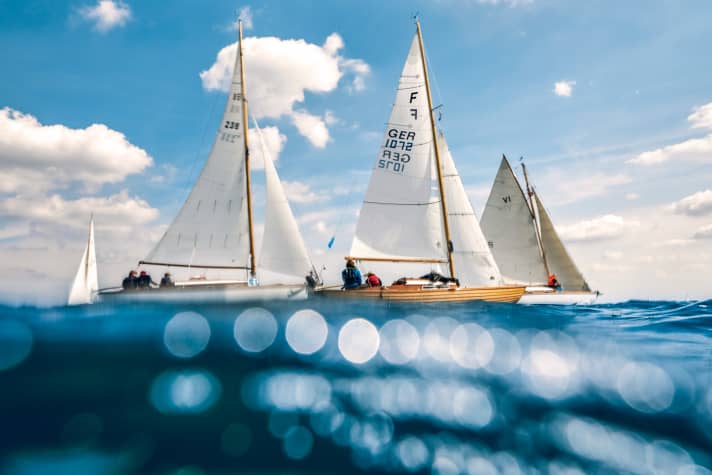
Once a year, the Baltic seaside resort of Laboe becomes the stage for the North German classic yacht fleet. Since 1991, the crews have been coming here with their historic yachts to meet again and exchange ideas. And to sail regattas - more with each other than against each other.
The event, now called German Classics, regularly brings together around 150 classic cars, making it not only the oldest, but also the largest event of its kind. It is also regarded as the nucleus of the northern German classic car renaissance, which began in the 1990s.
However, the organisers of the first meeting had something completely different in mind. In 1989, the Verein schwimmende Museen (floating museums association) in Kiel called on everything that could swim, was old and underway to take part in a veterans' regatta to express the demand for a museum harbour.
Around 50 ships came to the maritime festival and flew the flag, even if this regatta was still more like a squadron trip and the fleet offered everything from a converted fishing cutter to a pirate dinghy to a navy twelve-oared dinghy.
Laboe has been the venue since 1991. At that time, the term "classic" did not yet exist in connection with floating classic yachts. It emerged in the mid-1990s when the Freundeskreis Klassische Yachten was founded as part of the winter meeting of regatta participants, which has organised today's German Classics ever since.
The event is explicitly aimed at historic sailing yachts. Old work boats or retro classics of modern design are just as little addressed by the invitation as motorboats. The success proves the Friends right. The regatta soon grew to over 200 participating boats, the programme was expanded to include several races and the shore programme now extends over several days.
Above all, however, the festival-like gathering has provided and continues to provide the impetus for many restorations. Many an owner of an old wooden boat first learns here what a historical treasure he owns and is motivated to restore the already beloved ship to its original condition.
The restoration prize, which has been awarded since 1995, is a further incentive for the preservation of the fleet. With its award, the jury honours the yacht-historical significance and the scope of a project, the faithful execution, the quality and the proportion of the owner's own work.
The growing interest generated by the Laboe Regatta encouraged the creation of the "Save the Classics" campaign, the restoration fund and a charter with principles for the restoration of classic yachts.
With the Klassiker-Rennwert, or KLR for short, a handicap system with a measurement and remuneration formula was also developed for the Laboe Regatta in 1995, which is now used throughout Germany and in neighbouring European countries.
Due to the coronavirus restrictions, the event had to be cancelled in 2020 and held under strict conditions in 2021. This year, the 33rd German Classics were once again held in the usual manner and size on Kiel's outer fjord.
2nd rendezvous of the classics- Kiel Week for traditional yachts
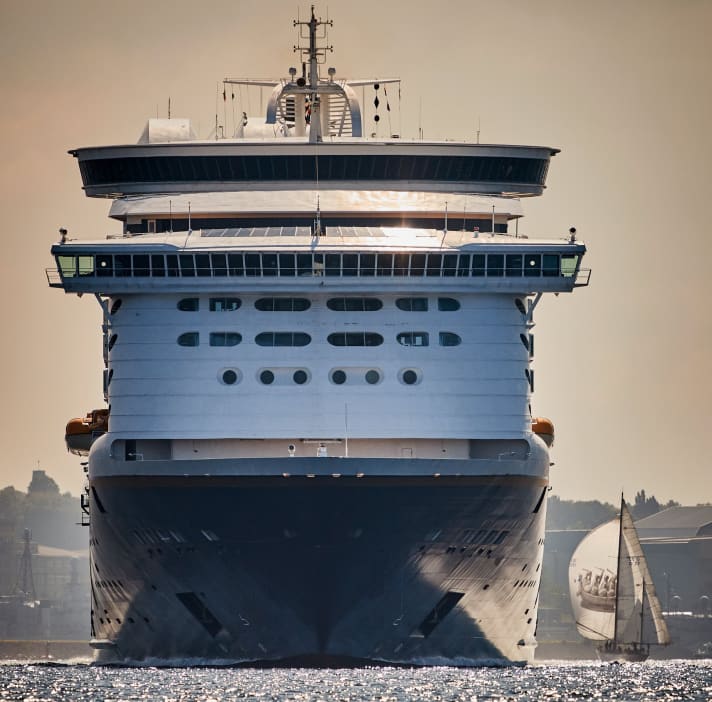
At the beginning of Kiel Week, the classic yachts meet on the fjord on a historic regatta course. This leads criss-cross across the water. In the harbour in front of the Kiel Yacht Club, the fleet is then moored at the place where everything to do with regattas took place in the days of the emperor. The prize-giving ceremony in the large hall of the clubhouse then finally conveys the traditional Kiel Week atmosphere.
For several years now, the Rendezvous has started on Thursday on the Schlei. Here, the participating crews celebrate in the Henningsen & Steckmest shipyards before travelling together to Kiel on Friday.
The barbecue evenings at the British Kiel Yacht Club on Fridays were once a legendary part of the event. However, the sailing club of the British soldiers is no longer at home here now that they have left.
The sailing is ambitious, but not dogged, in several groups. Spectators will have the unique opportunity to admire the participating fleet on Saturday after they enter the "Million Pool" in front of the KYC, which is reserved for participants in the Classic Rendezvous.
3rd Robbe & Berking Sterling Cup, Flensburg: specialising in beautiful lines
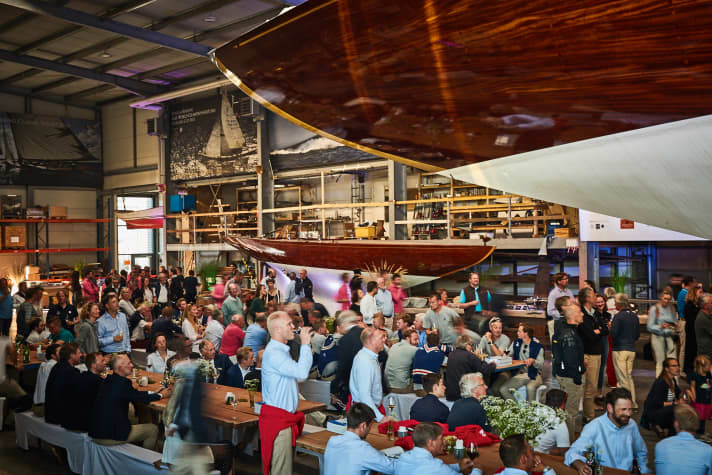
For almost 30 years, Flensburg entrepreneur Oliver Berking, who himself grew up on wooden planks, has been organising one of the largest classic events in the Baltic Sea region on the fjord off Glücksburg together with the Flensburg Sailing Club. The Robbe & Berking Sterling Cup owes its name to the prizes awarded by Berking's silver manufactory, a family business steeped in tradition, which is now run by the fifth generation of classic jewellery fans.
The event, then still called the Flensburg Classic Boat Festival, was founded in 1995 when Berking and his family visited the wooden boat festival in Risør in southern Norway and the Nioulargue in St Tropez and were fascinated by the atmosphere and the yachts at these gatherings of enthusiasts.
The idea of organising such a festival in Flensburg itself was born. In the very first year, 60 classic cars attended, 90 the following year and in the third year, 200 participating classic cars and their crews were registered.
In 2001, Berking organised the first world championship as part of the Flensburg Classic Regattas with the 5.5 World Championship. A short time later, he and two friends acquired the "Ostwind" from the German Navy in order to save this historic twelve-ship, built in 1939 as the "Sphinx" - as it is known today - from decay. After its completion in 2008, the Sterling Cup was the venue for the World Championship of 12 metre MR yachts for the first time.
Berking did not want the expertise gained during the restoration to be lost. So he founded Robbe & Berking Classics, a shipyard that soon became the first port of call for fans of classic metre yachts.
In addition, the Sterling Cup increasingly became the setting for the championships of the various metre classes. After 2008, the 12-metre boats also competed for European and World Championship titles here in 2011, 2015 and 2017. With 15 classic 12mR yachts at the start of the European Championship in 2015, a record number of participants was reached that had only been achieved once before in the history of the class, which has existed since 1907, namely on the occasion of the 150th anniversary of the America's Cup in Cowes.
Today, it is part of the event's concept to specifically invite individual classes to organise their championships at the Sterling Cup. In addition to 5.5, 6mR, 8mR and 12mR yachts, archipelago cruisers and dragons have also answered the call to Flensburg. And so crowned heads and prominent sailors have already been welcomed on the terrace of the Flensburg Sailing Club as part of the event, which - as organiser Berking attaches great importance to - has retained its character as a family festival to this day.
4th Max-Oertz Regatta, Neustadt i. H.: a guest of a legend
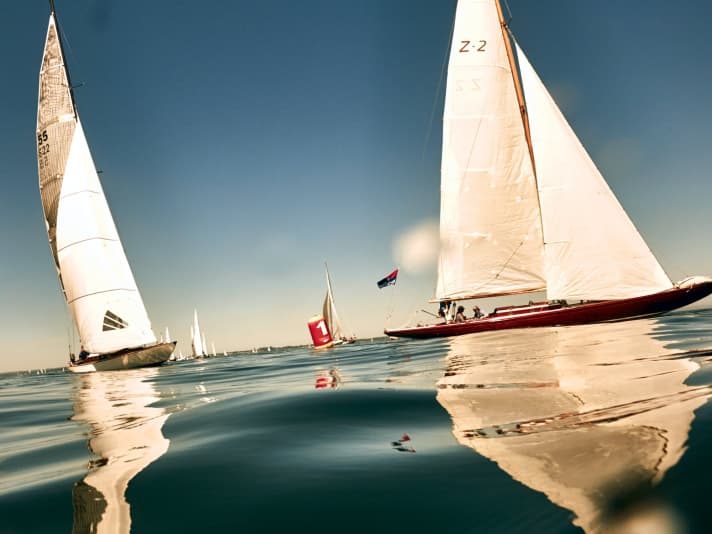
In honour of the famous German designer, a classic regatta has been sailed in his birthplace Neustadt in Holstein since 2001, to which around 50 yachts are regularly entered by their owners. The fleet is moored in the picturesque town harbour, with a marquee set up directly in front, where people eat and drink, party and dance. The informal atmosphere is particularly important to the organisers. The most official part of the meeting is the traditional asparagus dinner. The hard core of the participants gather around the fire bowl until the early hours of the morning. In terms of sailing, the event has plenty of excitement to offer with an up-and-down and several triangular regattas, although the sailing is not overly competitive. Many family crews gather at the start after the legendary joint breakfast and enjoy taking to the course together.
5th Night Regatta The Run: Midsummer Night's Dream for classic car fans

In the canon of Northern European classic regattas, one event stands out in particular: the night regatta The Run is less a breathless race through the dark and more a rally around midsummer night. When the days are at their longest, the Freundeskreis Klassische Yachten invites the crews at four starting locations to the run to the small Danish town of Svendborg on the sound of the same name, which runs along the south coast of Funen.
From the Flensburg Fjord, the Schlei, the Bay of Strande and Fehmarn, it's time to set course in order to be in port on Saturday in time for the shore programme with music and award ceremony.
The night regatta The Run took place for the first time in 2015 and was immediately fully booked. Due to the limited capacity at the evening event in Svendborg, participants must register quickly if they want to get a starting place.
Although the long distance was intended as an offer for the big classics, which are often handicapped on the short courses of the usual regattas, the Midsummer Night's Dream at Sea has also been accepted by the small sea cruisers, skerry cruisers, folk boats and dinghies, and even dinghy cruisers.
The hours of darkness are only brief, but they are enough for an exciting moment when the twilight reveals how the nearby field has organised itself since it disappeared from view hours earlier.
The participating yachts arrive in Svendborg throughout Saturday, and the reunion is accompanied by a great deal of greeting. The atmosphere is very special when you arrive in the foreign harbour after this real blow across the sea.
6th Flensburg Regatta of 1855: a reminder of the beginnings of yachting

In memory of the first "Regatta for pleasure boats" in 1855, the Flensburg Classic Yachts Association has been organising the Flensburg Regatta of 1855 since 2005. The event was initiated at the time by British engineers who were building a railway in Flensborg, Denmark. King Frederik VII personally donated the prize. And so around 50 participating boats from England, Denmark and Germany gathered at the start, which was an extraordinary success for the time - sailing was still in its infancy. Today, the event aims to build a bridge between German and Danish classic sailors and draw attention to Flensburg's historic classic harbour.

